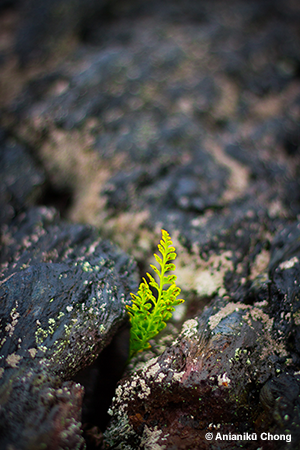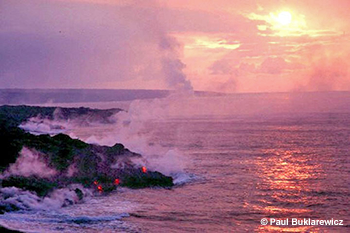Founding History
 At the turn of the millennium, public health officials and community leaders in northern Hawai‘i Island conducted research to determine viable solutions to residents’ greatest challenges. Extensive qualitative and quantitative data were collected about health and welfare issues in the Districts of Hāmākua and North and South Kohala. Community forums were held to present the accumulated information to residents of the districts. Faced with troubling health statistics—high rates of drug and alcohol abuse, high rates of domestic violence, and high rates of diabetes, to name a few—participants were asked a simple question: “What would make us a happier and healthier community?”
At the turn of the millennium, public health officials and community leaders in northern Hawai‘i Island conducted research to determine viable solutions to residents’ greatest challenges. Extensive qualitative and quantitative data were collected about health and welfare issues in the Districts of Hāmākua and North and South Kohala. Community forums were held to present the accumulated information to residents of the districts. Faced with troubling health statistics—high rates of drug and alcohol abuse, high rates of domestic violence, and high rates of diabetes, to name a few—participants were asked a simple question: “What would make us a happier and healthier community?”
Officials expected responses such as “more community health clinics” or “more domestic violence shelters”—indeed, legitimate and needed solutions—yet residents gave unexpected answers that called for a fundamental shift in the way that we live in rural Hawai‘i:
- Greater educational opportunities for our youth
- Assurance that adults—especially young adults—are qualified for the new jobs that ought to be coming to the island
- A diversified economy
The answer was clear: education, more education, and a diversified economy. This message from the community was further reinforced by prevailing research indicating that educational attainment is the strongest predictor of positive health outcomes (see Section Two of James Lynch’s A Cry Unheard, Bancroft Press, 1999), and that educational services have one of the highest economic multiplier effects compared to other significant industries in Hawai‘i (see the Hawai‘i State Input-Output Study: 2007 Benchmark Report, Revised December 2013, Table 2-4).
See also:
Issue Brief #5: Education and Health. Robert Wood Johnson Foundation, 2011
Hawai‘i County Community Health Profile. North Hawai‘i Outcomes Project, 2012
The Influence of Inequality on Health Outcomes. National Center for Biotechnology Information, 2001
Hawai‘i Island residents understood that research and education were essential to determining how to develop the island’s economy in ecologically sound and culturally respectful ways. While island resources were and continue to be abundant yet finite, residents were struggling to promote economic development that did not further erode the island’s natural and cultural environments. Issues of community health, limited educational and employment opportunities, and growing income disparity were at the forefront of local dialog and planning activities—much like they are today.
Community leaders agreed with the solutions chosen by residents, and expressed frustration with government’s unwillingness to establish a strong postsecondary presence in the northern and western parts of Hawai‘i Island. Leaders also indicated that such a postsecondary presence could build on the island’s natural beauty, thus creating teaching and research programs that fostered a sense of respect for the environment. Respected Kanaka Maoli (Native Hawaiian) leaders such as Robert Lindsey, Jr., Noe Noe Wong-Wilson, and John DeFries embraced this idea, emphasizing that Hawaiʻi Island itself is a valuable learning laboratory and a magnificent source of indigenous knowledge for the contemporary world.
When Cornell University launched its Earth and Atmospheric Systems field study program on Hawaiʻi Island in 2004 through The Kohala Center, it announced: “The Island as Teacher. You as Student. Mutually Beneficial.”
The community planning process was complemented by a leadership survey in which 30 private and public sector leaders participated, representing fields that ranged from the visitor industry to ranching to healthcare to county government and education. Leaders were consistent in their vision:
- Strengthen the educational and research infrastructure on the island as a way of investing in multigenerational assets.
- Build on the recent national and international visibility of the North Hawai‘i Community Hospital, the nation’s first hospital to credential non-Western practitioners of medicine, as a way to attract global research and teaching interests to Hawai‘i Island. Thus, an early interest in ethnopharmacology and ethnobotany was established.
- Build an undergraduate educational program that would foster a sense of respect for Hawai‘i Island’s spectacularly beautiful natural landscape.
- Connect these teaching and research programs with K-12 schools in order to bolster science education. Leaders envisioned young college scientists mentoring even younger scientists, and they envisioned professional development opportunities being created for K-12 instructors. They also believed that the connection to K-12 schools would remind scientists of their obligations to the future.
 Through this inductive process, the idea of creating an independent academic institute with a focus on environmental, ocean, and botanical sciences emerged. Given the new academic institute’s closeness to island communities, island leaders felt it was necessary to orient all new teaching and research programs to Hawai‘i Island’s cultural, spiritual, and natural landscapes. Relationships were built with prominent organizations such as Kamehameha Schools, the Edith Kanaka‘ole Foundation, and Na Kala‘i Wa‘a Moku o Hawai‘i. The boldness of these leaders’ collective vision and the idea of creating a new academic institute based on the expressed needs of island communities immediately caught the attention of the world scientific community.
Through this inductive process, the idea of creating an independent academic institute with a focus on environmental, ocean, and botanical sciences emerged. Given the new academic institute’s closeness to island communities, island leaders felt it was necessary to orient all new teaching and research programs to Hawai‘i Island’s cultural, spiritual, and natural landscapes. Relationships were built with prominent organizations such as Kamehameha Schools, the Edith Kanaka‘ole Foundation, and Na Kala‘i Wa‘a Moku o Hawai‘i. The boldness of these leaders’ collective vision and the idea of creating a new academic institute based on the expressed needs of island communities immediately caught the attention of the world scientific community.
By late 2000, the idea of building an independent academic institute that would respectfully engage Hawai‘i Island’s natural and cultural environments was taking firm shape. Early organizers of the project met with several dozen senior faculty and administrators from the University of California at Santa Barbara and Cornell University; it was through these meetings that it became clear that Hawai‘i Island, the land itself, was a truly valuable intellectual asset—a far cry from viewing the land just for purposes of extraction and commercial development. It also became clear that the challenges to the natural environment were, in and of themselves, intellectual assets: those challenges could draw research programs to produce new solutions to global environmental challenges, as well as heal the island’s natural environment. And these applied research programs could further build the science and education sectors of Hawai‘i Island’s economy. Indeed, it was the scientific community that defined The Kohala Center’s initial programmatic areas: Ocean Sciences, Environmental Studies, Alternative Energy, and Global Health.
In January 2001, the formation of The Kohala Center was formally announced at a breakfast meeting in Waimea for Hawai‘i Island leaders. The keynote speaker, Professor Oliver Chadwick, presented research conducted by him and colleagues Professor Peter Vitousek from Stanford University and Professor Louis Derry from Cornell University that had just been featured on the cover of Nature. The theme of his keynote, “Hawai‘i as a Model Ecosystem of the World,” served as an encapsulation of his recently published research as well as a fitting description of The Kohala Center’s genesis.
These early conversations were soon followed by conversations with institutions such as the School of Forestry and Environmental Studies at Yale University and the Massachusetts Institute of Technology. By 2002, the founding executive director of The Kohala Center, Dr. Matthews M. Hamabata, had received an invitation from MERITUM, a research group supported by the European Union, to make presentations about The Kohala Center’s work to convert the island’s natural assets (and the challenges presented to those assets by human use) into intellectual assets that could drive the development of a new kind of economy in rural Hawai‘i. Over the years, and at the invitation of European colleagues, Dr. Hamabata has presented The Kohala Center’s work in Oslo, Madrid, and Luxembourg.
Indeed, The Kohala Center emerged in response to identified community needs and to the generous interest of the world’s scientific community. It became clear that through The Kohala Center’s focus on research and education and its respectful engagement of Hawai‘i Island environments, The Center could sustain the natural environment, strengthen the social fabric, and develop the economy of Hawai‘i Island. The Kohala Center would help communities on the island and around the world thrive—ecologically, economically, culturally, and socially.

